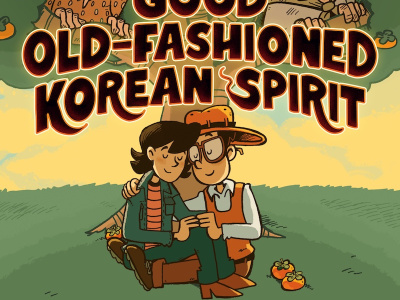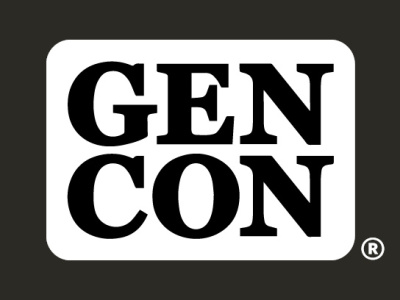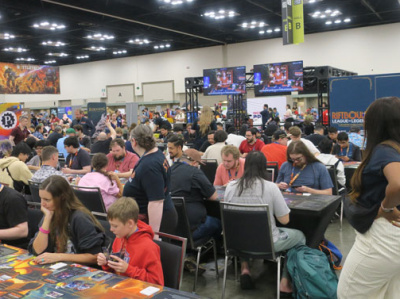This week it was a tale of two cities in my hometown of Seattle. On Tuesday night, for a class I teach at the University of Washington, I had a guest speaker from Microsoft talking about the company’s big push into AI with a new suite of "co-pilots" (features that automatically generate content for you) embedded into its products like Word, Excel and PowerPoint, plus a new image generation application and its tools for software development.
Several days later, I attended the Short Run Comics and Arts Festival, our big local independent and alternative comics show, featuring rows and rows of handmade minicomics, zines, and artisanal creations where the entire point was intimate interaction between the reader and the creator’s personal vision.
Adding fuel to the fire, I recently received a press release from the first of what is sure to be a handful of companies promising to bring the "efficiencies" of generative AI to the medium of comics by helping storytellers with ideas but no skills or patience to pump out images to streamline the creation of webtoons and other comics. All this left me with some decidedly ambivalent feelings.
The AI assistants no one asked for. The issue of generative AI for artwork in particular has concerned me since I first started exploring the topic last year (see "Can Legal Action Derail the AI Art Juggernaut?." Anyone who has played around with tools like Midjourney, Dall-E or Stable Diffusion recognizes how these tools can create evocative images from a few well-chosen words in a prompt. Though the bots still have some weird issues with anatomy and can’t perfectly capture the style of individual artists (although they are often too close for comfort), they have always been aces at composition and color. And ominously, they are getting better at reducing the amount of creepy distortions and keeping characters consistent from image to image.
For professional artists, AI art tools can help with stuff like generating reference images and backgrounds, or providing a starting point for concepts. The temptation is that "labor-saving" becomes "labor replacement," costing artists doing routine tasks like production design, environmental design, storyboards and animation their jobs. In comics, the number one job in the crosshairs is likely to be the colorist’s assistant who does the "flats," preliminary to rendered color. But the actual colorists may be next.
In the short term, I’m less worried about the tools that automate the work of penciling and inking. Yes, the capabilities of generative AI are increasing, and will certainly tempt the lazy, the greedy and the clueless (which is a fair number of people in any business, to be honest). But the question that the tech bros who make and market these “solutions” never ask is "who wants to read comics made by people who can’t even be bothered to master their skills?"
A lot of AI triumphalism is built on the backs of the myth of a born storyteller who is just too busy, or not naturally talented, suddenly empowered to give voice to their imagination. From the perspective of software engineers who build the products and found the companies, this is a technical issue that can be solved with more ingenious tools. It does not dawn on them that the time that creators spend frustrated and exasperated by their limitations is what makes the work good.
Walking the aisles of Short Run really drove that home. Almost all the creators exhibiting their work displayed zero interest in "craft" for its own sake. The expressiveness of the lines, the marks on the page, the heavy stylization and unpolished energy of the stories was the whole point. And while a lot of those experiments are unlikely to ever amount to much commercially, incubation in this scene is what produced folks like Matt Groening, Lisa Hanawalt, Ed Brubaker, and Rebecca Sugar, who, you know, did alright. It’s not clear to me how far any of those people would have made it taking shortcuts made possible by AI tools that give busy people a quick way to tell their stories.
Where AI can help. As creepy as AI can feel when it encroaches on core-human activities like writing and making art, the underlying technology is essentially glorified auto-correct. The systems, trained on huge volumes of data, are really good at recognizing subtle patterns and anticipating what comes next based on statistical probability. And when it works, it is quite useful, particularly at squeezing out little bubbles of inefficiency in complex systems. If we ever succeed in getting a handle on carbon emissions, study of infectious diseases, or fraud prevention, for example, it will likely be due to advances in AI.
Looking at the comic market landscape, there are a few places where AI tools could help put the business on a sounder footing, particularly in the areas of sales and marketing. One notable casualty of the pandemic and its impact on the distribution system is a unified sales chart. Is this essential for the industry? Obviously not, but it would be helpful in a lot of ways. Right now, stitching together the available data from distributors, retailers, POS systems and other sources is imperfect and time-consuming. However, it is not difficult to envision training an AI on some trends and patterns to make increasingly accurate estimates.
AI tools are also a boon to small business that don’t have the resources to do marketing and promotion. Even simple apps like Mailchimp and Constant Contact are starting to become infused with very sophisticated AI tools for measuring the effectiveness of emails and newsletters, automating the creation of promotional materials, personalizing ads to very small subgroups of customers, making recommendations, and other tasks. Especially when retailers are crunched by rising rents, labor shortages and costs, this kind of thing would seem welcome.
Looking to comics production, there are two areas where AI can help make human experts more productive. AI-based translation systems are getting pretty darn good. Still, 99% right on a translation can end up 100% wrong if the missing details sound funny or offensive to native speakers. Still, considering the untapped markets for U.S. comics overseas and for international comics and manga in the U.S., AI tools could dramatically improve the output speed of translators and make more material available at lower cost.
Another interesting application is for digital comics. We know the vertically-scrolling webtoon format is capturing the attention of younger readers, but reconfiguring vertical comics for the printed page, and vice-versa, remains a production art challenge. This seems like a good use of an AI specially trained on comics pages, and I suspect at least one of the new entrants into the digital comics arena (see "Startup Digital Comics Platforms Aim to Get the Market Moving Again") is looking at this pretty closely.
More art than science. I was recently talking to an outside observer speculating on the potential for the comics business to get "rolled up" by some big financial players. To someone used to looking at the world as a problem to be solved by elegant systems thinking, I can see why this would be an attractive fantasy. "Be careful," I advised him. "Yes, the comics business has some lumps you could flatten out, but it’s the ugly things that make it beautiful."
I don’t expect an AI to understand that logic, but I’m hoping at least a few humans might.
The opinions expressed in this column are solely those of the writer, and do not necessarily reflect the views of the editorial staff of ICv2.com.
Rob Salkowitz (@robsalk) is the author of Comic-Con and the Business of Pop Culture and an Eisner-Award nominee.

Column by Rob Salkowitz
Posted by Rob Salkowitz on November 6, 2023 @ 4:44 pm CT
MORE COMICS
Pairing Neo-Gotham's Batman with Dakota City's Static
August 13, 2025
The series teams up Terry McGinnis, the Batman of Neo-Gotham, and Virgil Hawkins, Milestone’s Static.
New Graphic Novel by Creators of 'Banned Book Club'
August 13, 2025
Kim Hyun Sook and Ryan Estrada, creators of the Eisner-nominated Banned Book Club, are back with a lighter take on rebellious teens, meddling elders, and Korean traditions.
MORE COLUMNS
Column by Scott Thorne
August 11, 2025
This week, columnist Scott Thorne notes a new twist in the Diamond Comic Distributors saga and shares his thoughts on the Gen Con releases that will make the biggest impacts.
Column by Jeffrey Dohm-Sanchez
August 7, 2025
ICv2 Managing Editor Jeffrey Dohm-Sanchez lays out the hotness of Gen Con 2025.








